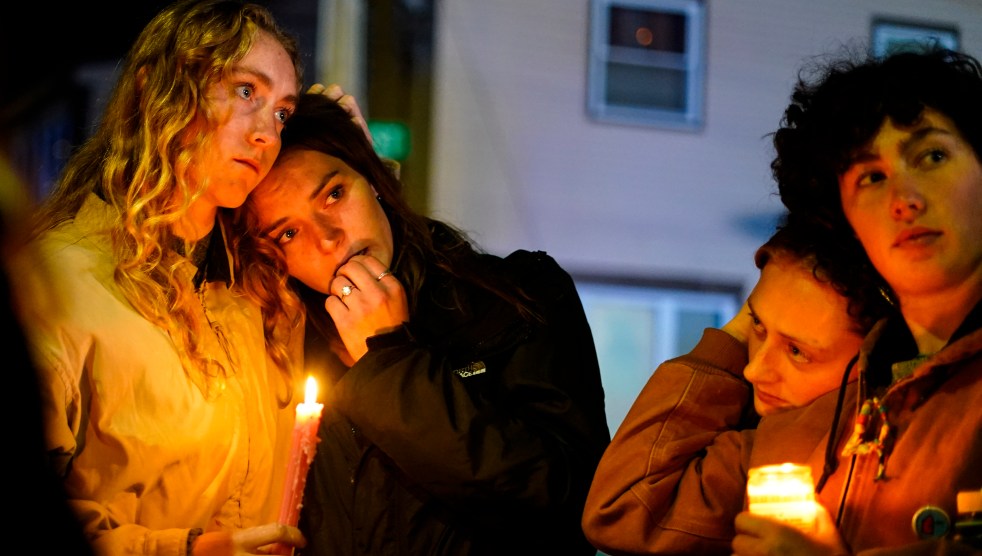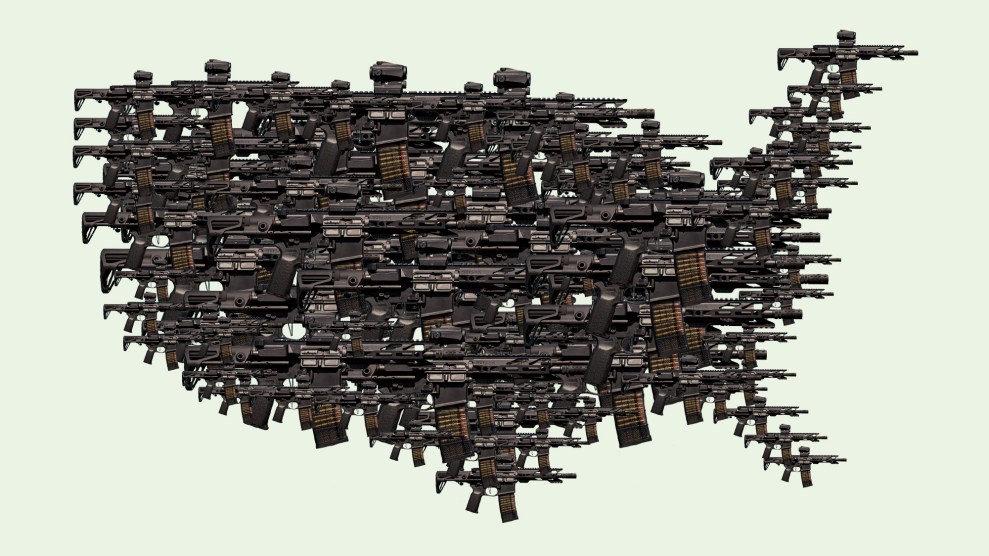
A vigil in Lewiston for mass shooting victims, Oct. 29, 2023Matt Rourke/AP
The national outcry after mass shootings always includes calls to keep guns away from dangerously troubled people. That possibility existed ahead of the devastating violence in Lewiston, Maine, as much as with any case in recent memory.
Army reservist Robert Card, the 40-year-old suicidal perpetrator who killed 18 people and injured 13 others at a bowling alley and a bar on October 25, displayed numerous warning signs far in advance. His erratic behavior going back months included complaints he was hearing voices, angry and paranoid claims about being smeared as a pedophile, punching a colleague, and threatening to shoot up the Army base where he worked. Some of his family members and supervisors sounded the alarm. After a two-week stay and a psychiatric evaluation in July at an Army hospital, Army officials directed that Card should not possess a weapon or handle ammunition, according to CNN. (It’s not yet clear whether Card was involuntarily committed.)
By mid-September, the Sagadahoc County Sheriff’s Office, which had communicated with family members and Army authorities since May, attempted a wellness check at Card’s residence. According to a statement released Monday by the Sheriff’s Office, after a deputy was unable to locate Card on September 15, the agency notified other law enforcement in the state: “The alert included a warning that Mr. Card was known to be armed and dangerous and included details of his behavior. The alert urged that officers use extreme caution.”
According to the sheriff’s statement, Card’s unit commander and brother then said they were acting to keep firearms away from Card and working to help get him additional treatment. The sheriff’s office canceled the alert to law enforcement on October 18, a week before the massacre. Card purchased firearms legally up until shortly before his attack.
More details of a systemic failure to intervene effectively with Card are certain to emerge in the days and weeks ahead. Those will further implicate Maine’s weak gun regulations, as well as the apparent failure to use the state’s so-called “yellow flag” law, a particularly narrow version of a tool for petitioning a judge to remove firearms from a dangerous person. Under Maine’s version, removal can only occur after an evaluation by a medical practitioner.
The tragedy in Lewiston has also been compounded by the typical blame on mental illness as the fundamental cause of the attack. While Card clearly was an aggrieved and disturbed person, we don’t yet know what, if any, clinical diagnosis he may have had or to what degree such a condition might have influenced his planning for the massacre.
We do know that blaming mental illness as the primary cause of mass shootings is not only misguided in most cases but also stigmatizing and counterproductive when it comes to reducing the problem. Despite popular myth, mass shooters are not inexplicably crazy people who just “suddenly snap.” They plan, they justify their intentions, and they prepare to kill and to die. That process involves observable patterns of behavior and can be disrupted.
While no mass shooter, in a basic sense, is a mentally healthy person, most mass shooters have not been diagnosed with clinical mental illness. About a quarter of all cases include psychiatric or neurological afflictions in the perpetrators, with exacerbating effects from those in some cases. But only about 5 percent of mass shootings involve psychosis or other severe mental illness as a key factor, according to separate studies by Columbia University psychiatrists, experts at the FBI’s Behavioral Analysis Unit, and my own extensive case research for my book Trigger Points.
On Monday, I spoke at length with Mary Harris of Slate’s What Next podcast about the complicated equation of mental health and mass shootings—and about how an attack so fraught with warning signs might have been prevented through the work of behavioral threat assessment. You can listen to our conversation here.














